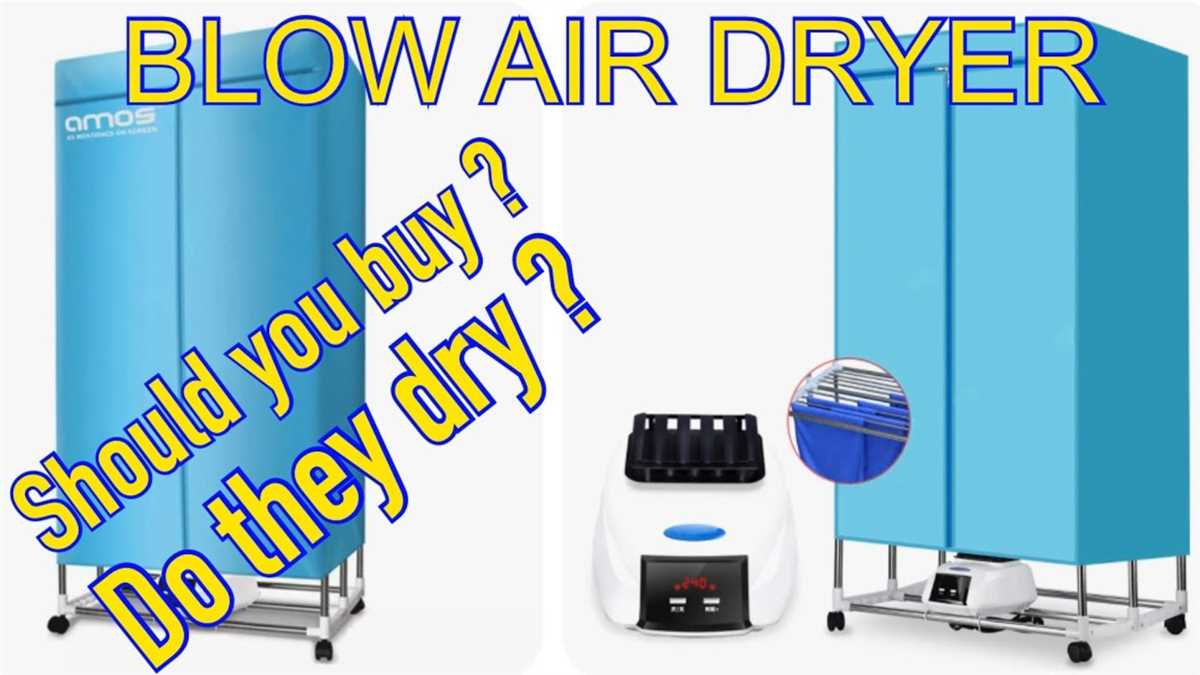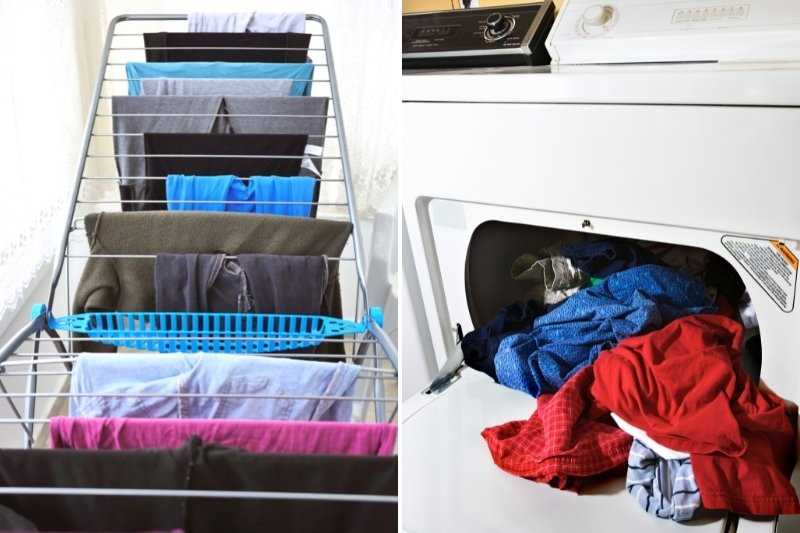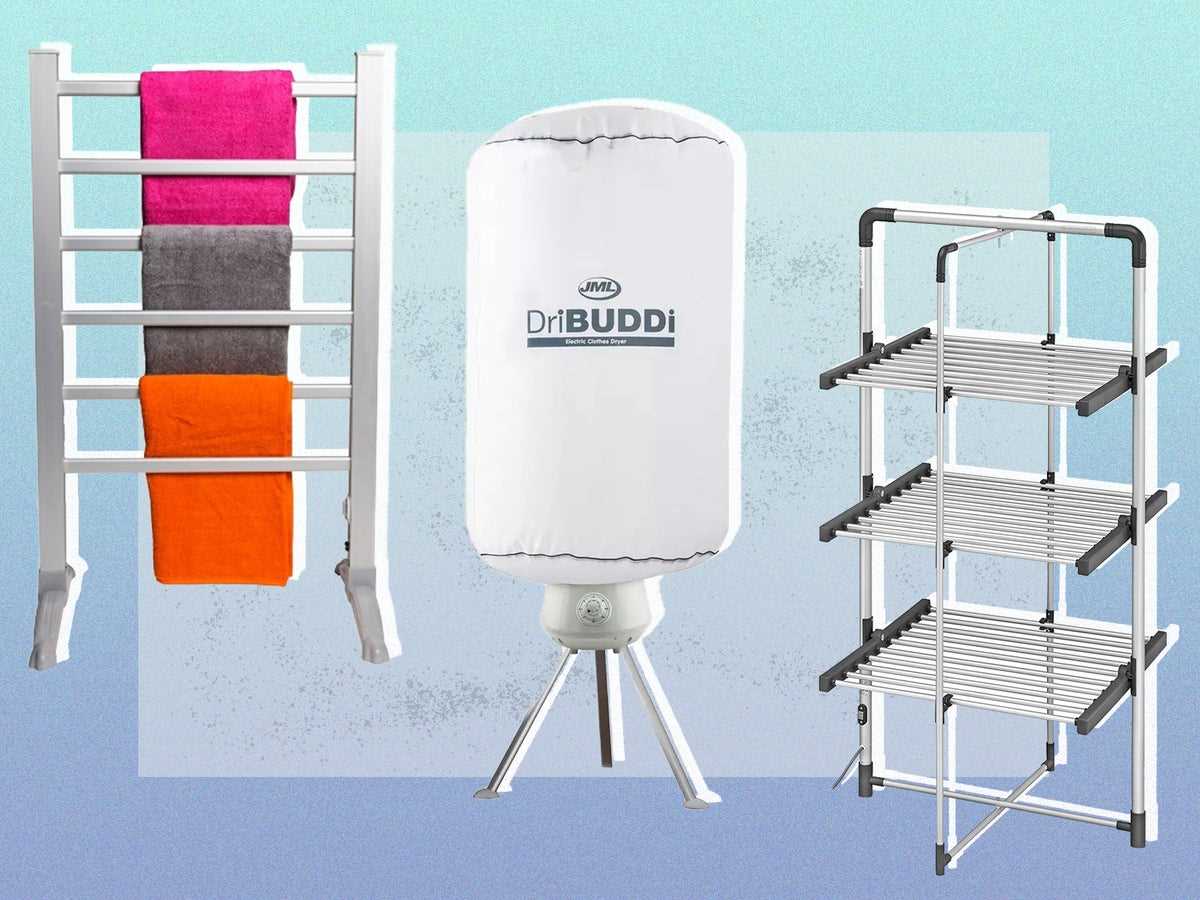


If you’re looking for the best way to dry your clothes, you may be wondering whether a heated airer or a tumble dryer is the better option. Both appliances have their advantages and disadvantages, and it’s important to weigh them carefully before making a decision. In this ultimate comparison guide, we’ll explore the features, benefits, and drawbacks of heated airers and tumble dryers to help you make an informed choice.
Firstly, let’s look at heated airers. These innovative devices use low-level heat to gently dry your clothes indoors. With a heated airer, you don’t need to worry about your clothes shrinking or getting damaged, as the heat is distributed evenly. They are also energy-efficient and cost-effective, as they consume less power compared to tumble dryers. Additionally, heated airers are versatile and can be used for a variety of fabrics, including delicate materials.
On the other hand, tumble dryers are known for their speed and convenience. They use hot air to quickly dry your clothes, eliminating the need for long drying times. Tumble dryers are especially useful for households with large loads of laundry or those who need their clothes dried in a short amount of time. However, they can be less gentle on delicate fabrics and may cause shrinkage or damage if not used correctly.
In conclusion, the choice between a heated airer or a tumble dryer depends on your specific needs and preferences. If you value gentleness and energy efficiency, a heated airer may be the better option for you. On the other hand, if speed and convenience are your top priorities, a tumble dryer may be the more suitable choice. Consider your laundry habits, the types of clothes you regularly wash, and your budget before making a decision. Both appliances have their merits, and choosing the right one will ensure that your clothes are dried efficiently and effectively.
Efficiency and Energy Consumption
When comparing the efficiency and energy consumption of heated airers and tumble dryers, there are several factors to consider.
Efficiency

Heated airers are generally considered to be more energy-efficient than tumble dryers. This is because they use less electricity to operate and do not require any gas or fuel to function. Heated airers are designed to dry laundry by circulating heated air around the items, allowing for efficient drying without the need for excessive energy consumption.
Tumble dryers, on the other hand, can be less efficient due to their reliance on electricity or gas to generate heat. While modern tumble dryers have become more energy-efficient, they still consume more energy compared to heated airers.
Energy Consumption

Heated airers have significantly lower energy consumption compared to tumble dryers. They typically consume around 200-600 watts per hour, depending on the model and size. This means that heated airers are much more cost-effective to run, resulting in lower energy bills.
Tumble dryers, on the other hand, can consume anywhere from 1,800 to 5,000 watts per hour, depending on the size and type of dryer. This higher energy consumption can make tumble dryers more expensive to operate in the long run.
Environmental Impact
Due to their lower energy consumption, heated airers have a reduced environmental impact compared to tumble dryers. The use of heated airers helps to decrease overall energy demand and reduces carbon emissions associated with electricity generation.
Tumble dryers, particularly older models, can contribute to higher carbon emissions due to their higher energy consumption. However, newer models are designed to be more energy-efficient and may have reduced environmental impact compared to older models.
Conclusion
Overall, heated airers are more efficient and have lower energy consumption compared to tumble dryers. They offer a cost-effective and environmentally-friendly alternative for drying laundry. However, it’s important to consider your specific needs and circumstances when choosing between the two options.
Drying Time and Capacity
When it comes to drying time and capacity, the heated airer and tumble dryer differ in several aspects.
Heated Airer

- The drying time of a heated airer can vary depending on the model and the amount of laundry to be dried.
- On average, it takes around 3 to 4 hours for a heated airer to dry a full load of laundry.
- However, the drying time can be longer if the laundry is heavily soaked or if the room temperature is low.
- Heated airers usually have a capacity of around 10 to 20 kg, allowing you to dry multiple items at once.
- Some heated airers also come with adjustable shelves or hangers, allowing you to dry delicate items without causing any damage.
Tumble Dryer

- Tumble dryers are known for their faster drying times compared to heated airers.
- Depending on the model and the selected drying program, a tumble dryer can dry a full load of laundry in 30 to 90 minutes.
- Tumble dryers have a larger capacity than heated airers, with most models having a capacity of 6 to 9 kg.
- This allows you to dry larger loads of laundry in a shorter amount of time.
- Tumble dryers also have various drying programs, such as sensor drying, delicate drying, and quick drying, which can further reduce the drying time based on your needs.
In conclusion, if you are looking for a faster and more efficient drying option, a tumble dryer would be the better choice. However, if you prefer a more energy-efficient and versatile option, a heated airer might be the right option for you.
Cost and Maintenance

When it comes to cost, heated airers are generally more affordable upfront compared to tumble dryers. Tumble dryers can be quite expensive to purchase, and their installation and venting requirements can add to the cost.
On the other hand, heated airers are more energy-efficient, resulting in lower running costs over time. They use less electricity compared to tumble dryers, which can help save on utility bills. Additionally, heated airers do not require any special installation or venting, making them a more cost-effective option in terms of setup.
In terms of maintenance, heated airers are relatively low-maintenance compared to tumble dryers. Tumble dryers require regular cleaning of lint filters to prevent clogging and reduce the risk of fire. Additionally, the venting system of a tumble dryer needs to be inspected and cleaned periodically to ensure proper airflow.
Heated airers, on the other hand, do not have lint filters or venting systems that require cleaning. They may require occasional wiping down or dusting to keep them clean and functioning properly.
| Heated Airer | Tumble Dryer | |
|---|---|---|
| Upfront Cost | Affordable | Expensive |
| Running Cost | Lower | Higher |
| Installation | Easy | May require professional installation |
| Maintenance | Low | Regular cleaning and inspection required |
Safety and Convenience

When it comes to safety, both the heated airer and the tumble dryer have their own advantages and disadvantages.
Heated Airer
- One of the main advantages of a heated airer is that it is considered to be a safer option compared to a tumble dryer. As there is no risk of fire or overheating, you can leave the heated airer unattended without worrying about any safety hazards.
- Heated airers are also more energy-efficient compared to tumble dryers, as they consume less electricity. This not only helps to reduce your carbon footprint but also saves you money on your energy bills.
- Additionally, heated airers are quieter and generate less noise compared to tumble dryers. This can be particularly beneficial if you live in a small apartment or have a newborn baby.
- However, one potential safety concern with heated airers is the risk of burns. The heating elements can become very hot, so it is important to keep children and pets away from the airer to avoid any accidents.
Tumble Dryer
- Tumble dryers have safety features such as thermal fuses and temperature controls that help to prevent overheating and reduce the risk of fire. However, there have been cases of tumble dryers causing fires, so it is essential to follow the manufacturer’s instructions and regularly clean the lint filter to reduce the risk.
- Tumble dryers are known for their convenience and speed. They can dry clothes much faster than heated airers, making them a popular choice for people with busy lifestyles.
- However, tumble dryers can be noisier and take up more space compared to heated airers. They also consume more electricity, which can increase your energy bills.
- Another concern with tumble dryers is that they can cause clothes to shrink or become damaged if not used correctly. It is important to read and follow the garment care labels to prevent any accidents.
In conclusion, both the heated airer and the tumble dryer have their own safety and convenience factors to consider. Ultimately, the choice depends on your specific needs and preferences.
FAQ
What is a heated airer?
A heated airer is a device used for drying clothes indoors. It consists of a metal frame with bars or wires where you can hang your clothes. It uses electricity to generate heat and circulate warm air around the clothes, helping them dry faster.
How does a tumble dryer work?
A tumble dryer is a machine that dries clothes by spinning them in a drum while blowing hot air through them. The hot air helps evaporate the moisture from the clothes, and the drum motion helps separate the fabrics for more efficient drying.
Which one is more energy-efficient, a heated airer or a tumble dryer?
In general, a heated airer is more energy-efficient than a tumble dryer. A heated airer uses less electricity because it does not rely on a motor or a large heating element like a tumble dryer does. However, it may take longer to dry clothes on a heated airer compared to a tumble dryer.
Are heated airers safe to use?
Yes, heated airers are safe to use as long as you follow the manufacturer’s instructions and take appropriate precautions. It is important to avoid overloading the airer with too many clothes, as it can affect the drying efficiency and potentially cause the clothes to fall off. It is also crucial to keep the airer away from flammable materials and ensure proper ventilation in the drying area.












